In a world where technology is evolving faster than a cat meme goes viral, government agencies are finally catching up. Enter GovTech, the superhero of the public sector. It’s not just a buzzword; it’s a game changer that’s transforming how governments operate and interact with citizens. Imagine cutting through red tape with the swipe of an app—sounds like a dream, right?
Table of Contents
ToggleWhat Is Govtech?
GovTech refers to the intersection of technology and government operations. It encompasses a range of digital tools and platforms designed to enhance public sector efficiency. By adopting innovative solutions, governments streamline services and engage citizens more effectively.
Companies in the GovTech sector develop various applications, including service delivery platforms, data analytics tools, and case management systems. These tools often simplify bureaucratic processes, making public services more accessible. For example, mobile applications permit citizens to report issues directly to local authorities, cutting through traditional red tape.
Governments leverage cloud computing to enhance information sharing among departments. This collaboration results in quicker decision-making and improved responsiveness to community needs. Cybersecurity solutions also play a crucial role, protecting sensitive public data from breaches and ensuring citizen trust.
Moreover, GovTech fosters transparency through open data initiatives. Citizens gain access to government performance metrics and budgets, encouraging accountability. Success stories from cities around the globe illustrate how embracing technology can lead to substantial improvements in service delivery.
Overall, the GovTech landscape continues to evolve as new technologies emerge. The integration of artificial intelligence, blockchain, and machine learning into public operations promises further advancements. Such innovations not only drive efficiencies but also empower citizens to participate actively in civic life.
Key Components of Govtech

GovTech encompasses essential elements that streamline government operations and enhance citizen engagement.
Technology Solutions
Innovative technology solutions form the backbone of GovTech. Digital platforms allow citizens to interact with government services. Applications for service delivery offer easy access to essential resources. Data analytics tools help agencies make informed decisions based on real-time information. Case management systems simplify tracking of requests and complaints for better service resolution. Cloud-based resources promote collaboration across departments, leading to improved efficiency. Mobile interfaces enable quick reporting of local issues directly to authorities. Such advancements ensure transparency in operations and bolster citizen trust in government.
Government Collaboration
Effective collaboration among government agencies is crucial to GovTech success. Interdepartmental communication enhances information sharing and decision-making. Joint initiatives using digital platforms streamline processes that benefit citizens. Partnerships with tech companies drive innovation and supply necessary expertise. Collaborative efforts foster a culture of continuous improvement in public service delivery. Engaging with communities helps tailor solutions to specific local needs. Through these collaborations, governments can leverage collective resources, ultimately improving responsiveness and accountability in public administration.
Benefits of Govtech
GovTech offers numerous advantages for public sector operations. Improved efficiency and transparency stand out as core benefits that enhance overall governance.
Increased Efficiency
Governments utilizing GovTech experience streamlined processes. Digital tools reduce time spent on routine tasks, allowing personnel to focus on higher-value activities. Automated systems enable faster service delivery, resulting in timely resolutions for citizens. Reducing bureaucratic hurdles simplifies public interactions, as technology facilitates seamless communication between agencies and the public. Real-time data access supports quick decision-making, directly impacting service quality and responsiveness. GovTech tools also enhance resource allocation, ensuring taxpayer dollars support initiatives that matter most.
Enhanced Transparency
Transparency takes center stage with the implementation of GovTech. Open data initiatives empower citizens by making government data easily accessible. Accessing performance metrics builds trust between governments and their communities. Citizens can track how funds are allocated, promoting accountability at all levels. Enhanced transparency also enables public involvement in decision-making processes, fostering an engaged citizenry. By clearly communicating the rationale behind policies, GovTech helps demystify government operations, encouraging greater civic participation and support for initiatives. Overall, improved transparency strengthens the bond between citizens and their government.
Challenges Facing Govtech
GovTech faces several challenges that hinder its full potential in transforming public services. These challenges include implementation issues and resistance to change, which often coexist within government structures.
Implementation Issues
Implementation issues frequently arise when adopting new technologies in the public sector. Budget constraints often limit the scope of GovTech initiatives, making it difficult for governments to allocate necessary resources. Insufficient training for personnel can lead to underutilization of digital tools, preventing effective service delivery. Fragmented IT systems complicate integration processes, causing delays in project timelines and inefficiencies. Limited data sharing between agencies often hampers collaboration, reducing the overall impact of GovTech solutions. Stakeholder engagement is necessary to ensure successful deployment and adoption of these technologies.
Resistance to Change
Resistance to change often manifests in government agencies when new technologies are introduced. Employees may feel apprehensive about adopting unfamiliar tools, fearing job displacement or increased workloads. Organizational culture plays a significant role in how changes are received; a lack of leadership support can diminish enthusiasm for GovTech initiatives. Communication failures may result in misunderstandings about the benefits of these technologies. In addition, public skepticism about data privacy and security can fuel apprehension, creating barriers to acceptance. Engaging stakeholders and providing clear communication can help alleviate fears and foster a more receptive environment for innovation.
GovTech stands at the forefront of modernizing public services and enhancing citizen engagement. By embracing innovative technologies governments can streamline operations and foster transparency. This transformation not only improves efficiency but also empowers citizens to actively participate in civic life.
As challenges persist in fully realizing GovTech’s potential addressing implementation issues and fostering a culture of innovation will be crucial. The ongoing evolution of technology offers exciting opportunities for governments to better serve their communities. With continued collaboration and commitment to modernization GovTech can significantly reshape the relationship between citizens and their government for the better.




